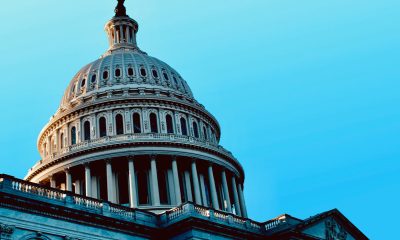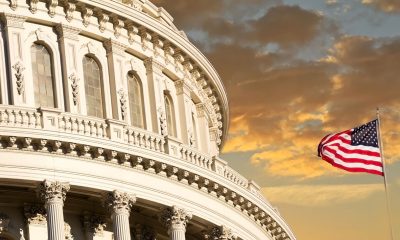#NNPA BlackPress
In the Classroom: How Educators are Teaching Thanksgiving Lessons to the Next Generation
THE AFRO — In real life, the situation was anything but a celebration. According to Holocaust Museum Houston, “when European settlers arrived in the Americas, historians estimate there were over 10 million Native Americans living there. By 1900, their estimated population was under 300,000. Native Americans were subjected to many different forms of violence, all with the intention of destroying the community.”
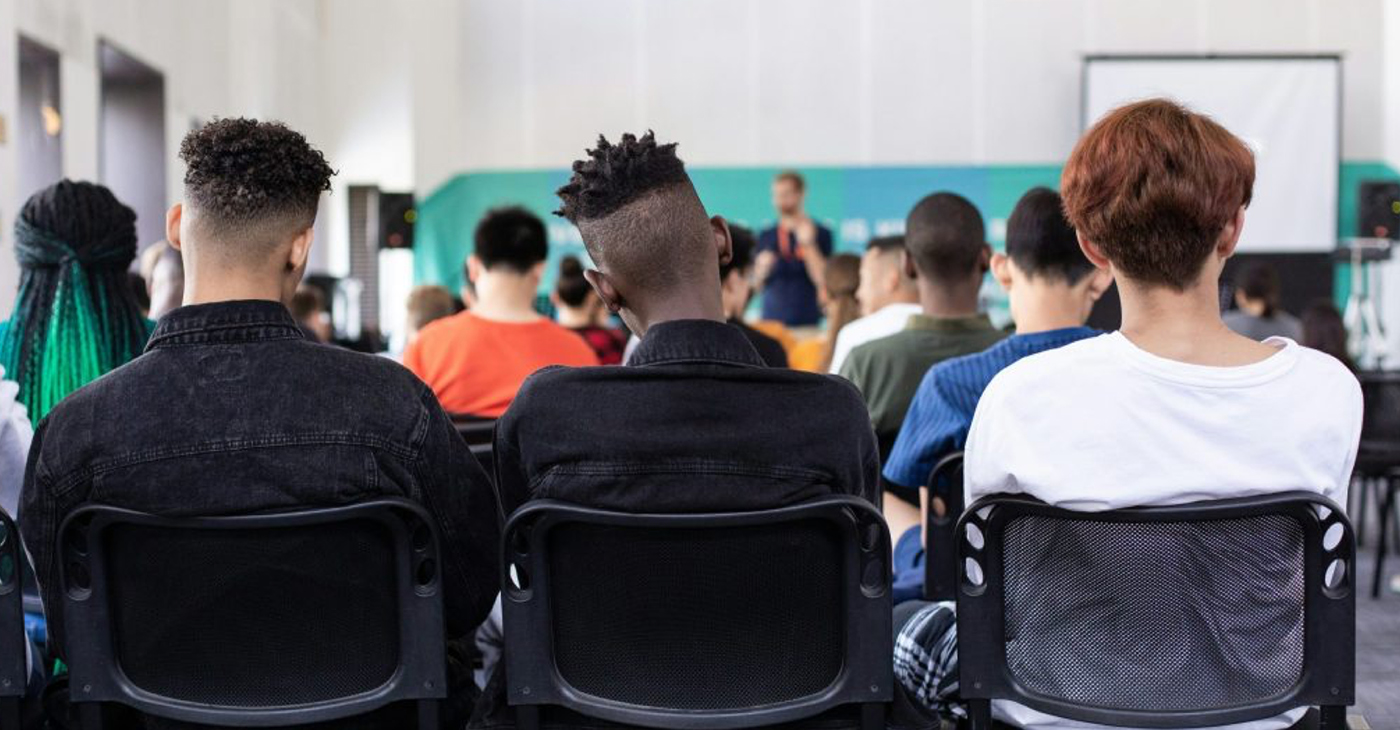
By DaQuan Lawrence | AFRO International Writer
DLawrence@afro.com
On Nov. 28 the Thanksgiving holiday will arrive, complete with family gatherings, community events and opportunities to give back and be grateful. While conversations about the origin of Thanksgiving and the purpose of the holiday remain suspended between myth and fact-based reality, educators in the state of Maryland grapple each year with how the holiday is addressed in the educational setting.
According to Brittanica, “Thanksgiving is modeled on a 1621 harvest feast shared by the English colonists (Pilgrims) of Plymouth and the Wampanoag people.”
While millions of American citizens use the holiday as the opener to a season of gratitude, for others the holiday is overshadowed by the death and destruction experienced by Native Americans at the hands of Europeans as colonization spread.
According to Dr. Kelli Mosteller, who serves as Citizen Potawatomi Nation’s Cultural Heritage Center director, the holiday “disregards against Native Americans and chooses to take…one tiny snapshot.”
“The world of social media puts pretty filters on it so that it doesn’t look the way it truly did,” she said, in a statement.
In real life, the situation was anything but a celebration. According to Holocaust Museum Houston, “when European settlers arrived in the Americas, historians estimate there were over 10 million Native Americans living there. By 1900, their estimated population was under 300,000. Native Americans were subjected to many different forms of violence, all with the intention of destroying the community.”
Information released by the museum states that “in the late 1800s, blankets from smallpox patients were distributed to Native Americans in order to spread disease. There were several wars, and violence was encouraged; for example, European settlers were paid for each Penobscot person they killed.”
Then came more atrocities.
According to the museum, “In the 19th century, 4,000 Cherokee people died on the Trail of Tears, a forced march from the southern U.S. to Oklahoma.”
The Citizen Potawatomi Nation is the federally recognized government of the Indigenous population and represents over 38,000 tribal members.
Some members of society believe the factual history behind the holiday provides ample reasons for citizens to not celebrate what is billed to the American public as a time to be thankful. To many Native Americans, the holiday ignores over 400 years of mayhem against Indigenous people and maintains the bloody colonialism system responsible for millions of lives lost.
Erica Frank, a social studies teacher specialist in Maryland, expressed concern over the topic of Thanksgiving and highlighted the significance of educational approaches to engage students.
“As a historian and curriculum writer, I struggle with how the narrative of Thanksgiving is relayed,” Frank said. “Like many American historical events, I struggle with the fact that from a young age we condition our students to be compassionate of individuals who created harm towards other cultures that still have reverberating impacts on society today.”
Frank was born and raised in Anne Arundel County, Md. and is currently in her 11th year of education. She remembers learning about the holiday during her own formative years.
“Unfortunately, my experience with Thanksgiving in grade school was more of a teaching in nostalgic American history–rather than accurate American history,” Frank told the AFRO.
“My grade level holiday themed lessons revolved around making turkey and pilgrim crafts to celebrate the coming together of two cultures during one meal. I was not taught about the Wampanoag tribe or the negative impact of Pilgrims– really, colonists– on Native Americans during this time period,” Frank said. “I appreciate that there are a growing number of resources available which discuss the varied perspectives. I have seen growth on the secondary level of both teachers and students asking the right questions about this day and other similar topics.”
Though the origins of the holiday go back to Plymouth, Mass., 1621, President Abraham Lincoln formally established Thanksgiving as a holiday in the U.S. over 200 years later in November 1863 during the Civil War. The holiday was created as a social mechanism to develop improved relations among northern states, southern states and tribal nations.
Unbeknownst to many Americans, is the fact that during the previous year, President Lincoln ordered 38 Dakota tribal members to die from hanging after corrupt federal agents prevented the Dakota-Sioux from receiving food and provisions. Members of the tribe retaliated while enduring starvation, causing the Dakota War of 1862.
Lincoln ultimately believed that Thanksgiving created an opportunity to reduce Indigenous populations’ negative sentiments and to restore their relationship with the federal government.
But the loyalty to the holiday runs deep- especially in the classroom, where Thanksgiving is formally introduced during the elementary school years, amid a student’s formative development period.
“I remember as far back as kindergarten, when teachers had us play the roles of pilgrims and Native Americans,” said Erica Sellman, an English Language Arts department chair at a middle school in Anne Arundel County. “They separated the class, and the Pilgrim group created a ship while the Native American group created beautiful head pieces from feathers. I recall being upset because I wanted to make a head piece, but I was not in that group.”
Voter registration for young Black women in 13 key states is on the rise, with 175 percent more engagement when compared with 2020 — nearly triple the rate. The surge highlights long standing political engagement within this demographic. (Photo courtesy of Word In Black)
The decision of whether to discuss the history of the Thanksgiving holiday in an in-depth manner is largely a matter of an educator’s discretion and dependent upon the educator’s experience and comfortability by addressing the subject with young learners.
“History should be a part of instruction– however, all educators cannot teach sensitive topics without biases,” Sellman said. “It is hard for some educators regardless of ethnicity to discuss some of the context behind historical events, but it can be done, and it should be done.”
Rutgers University’s Graduate School of Education provides resources for educators who are interested in teaching about the Thanksgiving holiday in a culturally responsive manner. Their guide, titled “Teaching Thanksgiving the Culturally Responsive Way,” notes how teachers need to start by deconstructing myths surrounding the holiday.
Experts from Rutgers say myths such as “the arrival of The Mayflower was the introduction between the Pilgrims and Native Americans,” need to be addressed, explored and corrected.
“Europeans had already initiated contact with the Wampanoag tribe through violent slave raiding. When The Mayflower arrived, there were at least two Wampanoag tribe members that spoke English, due to traveling to Europe and back,” states information from Rutgers University’s guide.
The university explains how the myth of “the Wampanoag tribe wanted to help the Pilgrims” is also wrong because “Wampanoag leader Ousamequin chose to welcome the Pilgrims as a strategy. At the time, his tribe was weak and had lower numbers due to coming in contact with disease. He thought an alliance would help strengthen the tribe and protect against rivals.”
Even the Thanksgiving dinner between the Pilgrims and the Native Americans is steeped in incorrect information, according to the university.
“Annual harvests are a tradition in Native American communities, and the Wampanoag’s annual harvest is what the Pilgrims experienced. In reality, a loose version of Thanksgiving was established in 1637 by Massachusetts Bay Governor William Bradford,” report historians from Rutgers. “Instead of commemorating a shared feast, the observance celebrated the Anglo-Pequot War, where armed soldiers surrounded the Pequot village and set it on fire, shooting anyone who tried to escape. During the two-year war, 700 Pequot people were killed or enslaved, with the tribe eventually being eliminated.”
The guide encourages culturally responsive teaching when it comes to the sensitive topic of Thanksgiving in the classroom.
In 2020, the National Education Association took note of Native educators who declared that lessons on the subject and holiday can be both accurate, respectful and interesting to learn about with an element of commemoration.
#NNPA BlackPress
A Nation in Freefall While the Powerful Feast: Trump Calls Affordability a ‘Con Job’
BLACKPRESSUSA NEWSWIRE — There are seasons in this country when the struggle of ordinary Americans is not merely a condition but a kind of weather that settles over everything.

By Stacy M. Brown
Black Press USA Senior National Correspondent
There are seasons in this country when the struggle of ordinary Americans is not merely a condition but a kind of weather that settles over everything. It enters the grocery aisle, the overdue bill, the rent notice, and the long nights spent calculating how to get through the next week. The latest numbers show that this season has not passed. It has deepened.
Private employers cut 32,000 jobs in November, according to ADP. Because the nation has been hemorrhaging jobs since President Trump took office, the administration has halted publishing the traditional monthly report. The ADP report revealed that small businesses suffered the heaviest losses. Establishments with fewer than 50 workers shed 120,000 positions, including 74,000 from companies with 20 to 49 workers. Larger firms added 90,000 jobs, widening the split between those rising and those falling.
Meanwhile, wealth continues to climb for the few who already possess most of it. Federal Reserve data shows the top 1 percent now holds $52 trillion. The top 10 percent added $5 trillion in the second quarter alone. The bottom half gained only 6 percent over the past year, a number so small it fades beside the towering fortunes above it.
“Less educated and poorer people tend to make worse mistakes,” John Campbell said to CBS News, while noting that the complexity of the system leaves many families lost before they even begin. Campbell, a Harvard University economist and coauthor of a book examining the country’s broken personal finance structure, pointed to a system built to confuse and punish those who lack time, training, or access.
“Creditors are just breathing down their necks,” Carol Fox told Bloomberg News, while noting that rising borrowing costs, shrinking consumer spending, and trade battles under the current administration have left owners desperate. Fox serves as a court-appointed Subchapter V trustee in Southern Florida and has watched the crisis unfold case by case.
During a cabinet meeting on Tuesday, Trump told those present that affordability “doesn’t mean anything to anybody.” He added that Democrats created a “con job” to mislead the public.
However, more than $30 million in taxpayer funds reportedly have supported his golf travel. Reports show Kristi Noem and FBI Director Kash Patel have also made extensive use of private jets through government and political networks. The administration approved a $40 billion bailout of Argentina. The president’s wealthy donors recently gathered for a dinner celebrating his planned $300 million White House ballroom.
During an appearance on CNBC, Mark Zandi, an economist, warned that the country could face serious economic threats. “We have learned that people make many mistakes,” Campbell added. “And particularly, sadly, less educated and poorer people tend to make worse mistakes.”
#NNPA BlackPress
The Numbers Behind the Myth of the Hundred Million Dollar Contract
BLACKPRESSUSA NEWSWIRE — Odell Beckham Jr. did not spark controversy on purpose. He sat on The Pivot Podcast and tried to explain the math behind a deal that looks limitless from the outside but shrinks fast once the system takes its cut.

By Stacy M. Brown
Black Press USA Senior National Correspondent
Odell Beckham Jr. did not spark controversy on purpose. He sat on The Pivot Podcast and tried to explain the math behind a deal that looks limitless from the outside but shrinks fast once the system takes its cut. He looked into the camera and tried to offer a truth most fans never hear. “You give somebody a five-year $100 million contract, right? What is it really? It is five years for sixty. You are getting taxed. Do the math. That is twelve million a year that you have to spend, use, save, invest, flaunt,” said Beckham. He added that buying a car, buying his mother a house, and covering the costs of life all chip away at what people assume lasts forever.
The reaction was instant. Many heard entitlement. Many heard a millionaire complaining. What they missed was a glimpse into a professional world built on big numbers up front and a quiet erasing of those numbers behind the scenes.
The tax data in Beckham’s world is not speculation. SmartAsset’s research shows that top NFL players often lose close to half their income to federal taxes, state taxes, and local taxes. The analysis explains that athletes in California face a state rate of 13.3 percent and that players are also taxed in every state where they play road games, a structure widely known as the jock tax. For many players, that means filing up to ten separate returns and facing a combined tax burden that reaches or exceeds 50 percent.
A look across the league paints the same picture. The research lists star players in New York, Philadelphia, Chicago, Detroit, and Cleveland, all giving up between 43 and 47 percent of their football income before they ever touch a dollar. Star quarterback Phillip Rivers, at one point, was projected to lose half of his playing income to taxes alone.
A second financial breakdown from MGO CPA shows that the problem does not only affect the highest earners. A $1 million salary falls to about $529,000 after federal taxes, state and city taxes, an agent fee, and a contract deduction. According to that analysis, professional athletes typically take home around half of their contract value, and that is before rent, meals, training, travel, and support obligations are counted.
The structure of professional sports contracts adds another layer. A study of major deals across MLB, the NBA, and the NFL notes that long-term agreements lose value over time because the dollar today has more power than the dollar paid in the future. Even the largest deals shrink once adjusted for time. The study explains that contract size alone does not guarantee financial success and that structure and timing play a crucial role in a player’s long-term outcomes.
Beckham has also faced headlines claiming he is “on the brink of bankruptcy despite earning over one hundred million” in his career. Those reports repeated his statement that “after taxes, it is only sixty million” and captured the disbelief from fans who could not understand how money at that level could ever tighten.
Other reactions lacked nuance. One article wrote that no one could relate to any struggle on eight million dollars a year. Another described his approach as “the definition of a new-money move” and argued that it signaled poor financial choices and inflated spending.
But the underlying truth reaches far beyond Beckham. Professional athletes enter sudden wealth without preparation. They carry the weight of family support. They navigate teams, agents, advisors, and expectations from every direction. Their earning window is brief. Their career can end in a moment. Their income is fragmented, taxed, and carved up before the public ever sees the real number.
The math is unflinching. Twenty million dollars becomes something closer to $8 million after federal taxes, state taxes, jock taxes, agent fees, training costs, and family responsibilities. Over five years, that is about $40 million of real, spendable income. It is transformative money, but not infinite. Not guaranteed. Not protected.
Beckham offered a question at the heart of this entire debate. “Can you make that last forever?”
#NNPA BlackPress
FBI Report Warns of Fear, Paralysis, And Political Turmoil Under Director Kash Patel
BLACKPRESSUSA NEWSWIRE — Six months into Kash Patel’s tenure as Director of the Federal Bureau of Investigation, a newly compiled internal report from a national alliance of retired and active-duty FBI agents and analysts delivers a stark warning about what the Bureau has become under his leadership.

Six months into Kash Patel’s tenure as Director of the Federal Bureau of Investigation, a newly compiled internal report from a national alliance of retired and active-duty FBI agents and analysts delivers a stark warning about what the Bureau has become under his leadership. The 115-page document, submitted to Congress this month, is built entirely on verified reporting from inside field offices across the country and paints a picture of an agency gripped by fear, divided by ideology, and drifting without direction.
The report’s authors write that they launched their inquiry after receiving troubling accounts from inside the Bureau only four months into Patel’s tenure. They describe their goal as a pulse check on whether the ninth FBI director was reforming the Bureau or destabilizing it. Their conclusion: the preliminary findings were discouraging.
Reports Describe Widespread Internal Distrust and Open Hostility Toward President Trump
Sources across the country told investigators that a large number of FBI employees openly express hostility toward President Donald Trump. One source reported seeing an “increasing number of FBI Special Agents who dislike the President,” adding that these employees were exhibiting what they called “TDS” and had lost “their ability to think critically about an issue and distinguish fact from fiction.” Another source described employees making off-color comments about the administration during office conversations.
The sentiment reportedly extends beyond domestic lines. Law enforcement and intelligence partners in allied countries have privately expressed fear that the Trump administration could damage long-term international cooperation according to a sub-source who reported those concerns directly to investigators.
Pardon Backlash and Fear of Retaliation
The President’s January 20 pardons of individuals convicted for their roles in the January 6 attack ignited what the report calls demoralization inside the Bureau. One FBI employee said they were “demoralized” that individuals “rightfully convicted” were pardoned and feared that some of those individuals or their supporters might target them or their family for carrying out their duties. Another source described widespread anger that lists of personnel who worked on January 6 investigations had been provided to the Justice Department for review, noting that agents “were just following orders” and now worry those lists could leak publicly.
Morale In Decline
Morale among FBI employees appears to be sinking fast. There were a few scattered positive notes, but the weight of the reporting describes morale as low, bad, or terrible. Agents with more than a decade of service told investigators they feel marginalized or ignored. Some are counting the days until they can retire. One even uses a countdown app on their phone.
Culture Of Fear
Layered over that unhappiness is something far more corrosive. A culture of fear. Sources say Patel, though personable, created mistrust from the start because of harsh remarks he made about the FBI before taking office. Agents took those comments personally. They now work in an atmosphere where employees keep their heads down and speak carefully. Managers wait for directions because they are afraid a wrong move could cost them their jobs. One source said agents dread coming to work because nobody knows who will be reassigned or fired next.
Leadership Concerns
The report also paints a picture of leaders unprepared for the jobs they hold. Multiple sources said Patel is in over his head and lacks the breadth of experience required to understand the Bureau’s complex programs. Some said Deputy Director Dan Bongino should never have been appointed because the role requires deep institutional knowledge of FBI operations. A sub-source recounted Bongino telling employees during a field office visit that “the truth is for chumps.” Employees who heard it were stunned and offended.
Social Media and Communication Breakdowns
Communication inside the Bureau has become another source of frustration. Sources said Patel and Bongino spend too much time posting on social media and not enough time communicating with employees in clear and official ways. Several told investigators they learn more about FBI operations from tweets than from internal channels.
ICE Assignments Raise Alarm
Nothing has sparked more frustration inside the FBI than the orders requiring agents to assist Immigration and Customs Enforcement. The reporting shows widespread resentment and fear over these assignments. Agents say they have little training in immigration law and were ordered into operations without proper planning. Some said they were put in tactically unsafe positions. They also warned that being pulled away from counterterrorism and counterintelligence investigations threatens national security. One sub-source asked, “If we’re not working CT and CI, then who is?”
DEI Program Removal
Even the future of diversity programs became a point of division. Some agents praised Patel’s removal of DEI initiatives. Others said the old system left them afraid to speak honestly because they worried about being labeled racist. The reporting shows a deep and unresolved conflict over whether DEI strengthened the organization or weakened it.
Notable Incidents
The document also details several incidents that have become part of FBI lore. Patel ordered all employees to remove pronouns and personal messages from their email signatures yet used the number nine in his own. Agents laughed at what they saw as hypocrisy. In another episode, FBI employees who discussed Patel’s request for an FBI-issued firearm were ordered to take polygraph examinations, which one respected source described as punitive. And in Utah, Patel refused to exit a plane without a medium-sized FBI raid jacket. A team scrambled to find one and finally secured a female agent’s jacket. Patel still refused to step out until patches were added. SWAT members removed patches from their own uniforms to satisfy the demand.
A Bureau at a Crossroad
The Alliance warns that the Bureau stands at a difficult crossroads. They write that the FBI faces some of the most daunting challenges in its history. But even in despair, a few voices say something different. One veteran source said “It is early, but most can see the mission is now the priority. Case work and threats are the focus again. Reform is headed in the right direction.”
-

 #NNPA BlackPress4 weeks ago
#NNPA BlackPress4 weeks agoLIHEAP Funds Released After Weeks of Delay as States and the District Rush to Protect Households from the Cold
-
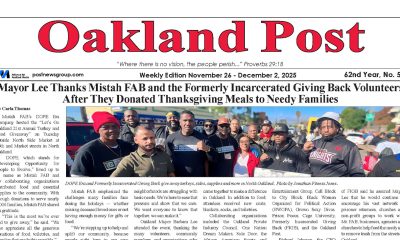
 Activism4 weeks ago
Activism4 weeks agoOakland Post: Week of November 26 – December 2, 2025
-

 Alameda County3 weeks ago
Alameda County3 weeks agoSeth Curry Makes Impressive Debut with the Golden State Warriors
-

 #NNPA BlackPress4 weeks ago
#NNPA BlackPress4 weeks agoSeven Steps to Help Your Child Build Meaningful Connections
-

 #NNPA BlackPress4 weeks ago
#NNPA BlackPress4 weeks agoSeven Steps to Help Your Child Build Meaningful Connections
-
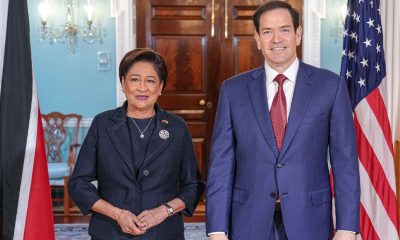
 #NNPA BlackPress4 weeks ago
#NNPA BlackPress4 weeks agoTrinidad and Tobago – Prime Minister Confirms U.S. Marines Working on Tobago Radar System
-

 #NNPA BlackPress4 weeks ago
#NNPA BlackPress4 weeks agoThanksgiving Celebrated Across the Tri-State
-
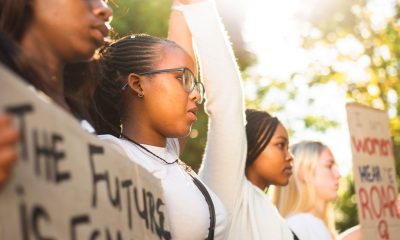
 #NNPA BlackPress4 weeks ago
#NNPA BlackPress4 weeks agoTeens Reject Today’s News as Trump Intensifies His Assault on the Press

